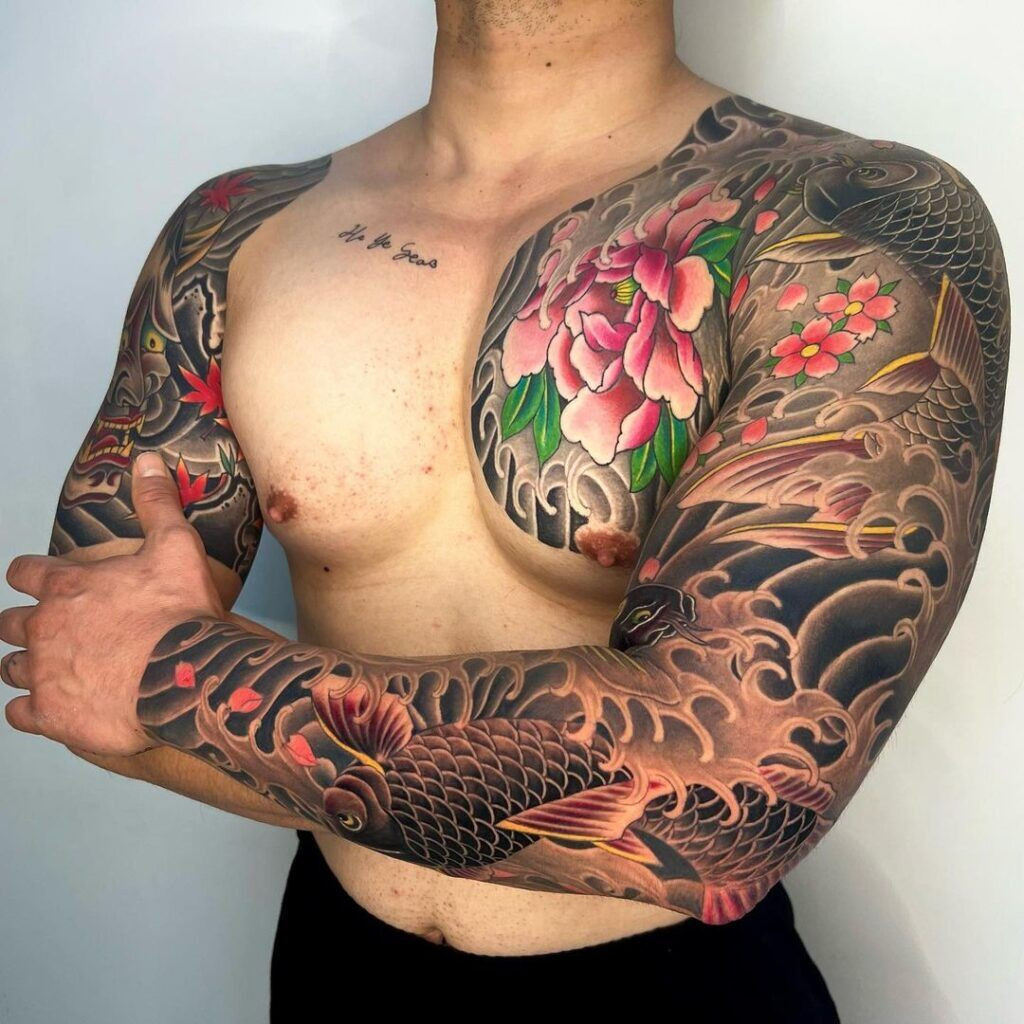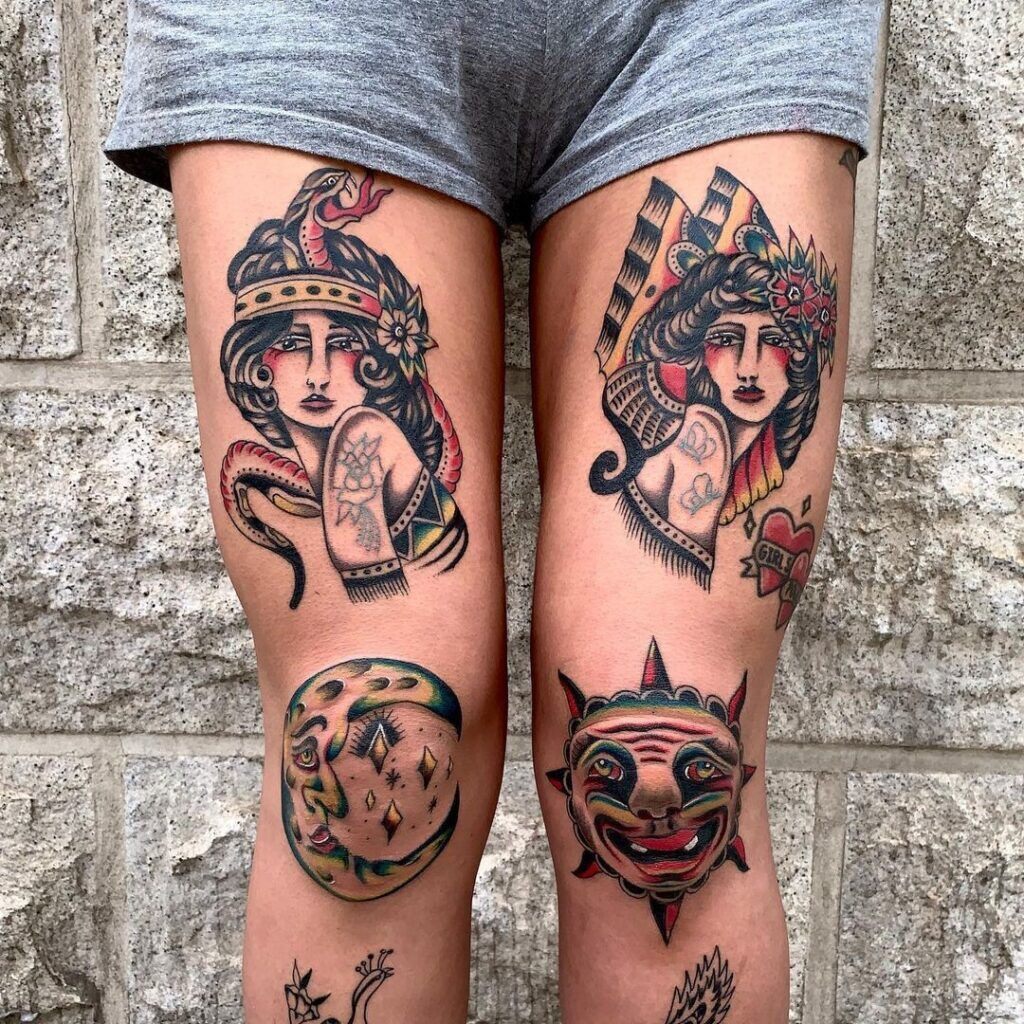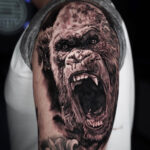Choosing the perfect tattoo is an exciting journey, and just as crucial as the design itself is deciding where to place it on your body. The location of your tattoo is not just an afterthought; it dramatically influences how your ink is perceived, impacting everything from its visibility and the statement it makes to the tattooing experience itself. Finding the Best Tattoo Locations involves considering various factors, ensuring your body art truly becomes a part of you in the way you envision.
In this comprehensive guide, we will delve into the essential aspects that determine the ideal placement for your new tattoo. We’ll explore diverse tattoo placement ideas, helping you make an informed decision that aligns with your personal style, tattoo design, and lifestyle.
Key Factors to Consider for Tattoo Placement
Selecting the best spot for your tattoo is a deeply personal decision, but several key factors can guide you in making the right choice. Thinking through these aspects will ensure your tattoo not only looks fantastic but also resonates with you on a personal level and fits seamlessly into your life.
Visibility
One of the first considerations is how visible you want your tattoo to be. Do you envision your tattoo as a prominent piece of art that you readily display, or do you prefer it to be more private, revealed only when you choose? Your lifestyle and professional environment play a significant role here. For individuals in more conservative work settings, easily concealable locations might be preferable. Conversely, if you work in a creative field or have a more relaxed personal style, you might be more inclined to choose a location that’s often on display.
Consider these visibility levels:
- Highly Visible: Forearms, hands, neck (sides and back), calves. These locations are generally exposed in most everyday clothing.
- Moderately Visible: Upper arms, shoulders, thighs, ankles, feet. These can be shown or hidden depending on clothing choices.
- Easily Concealable: Torso (chest, ribs, stomach, back), upper thighs, buttocks, behind the ear. These areas are typically covered by clothing and easily kept private.
Tattoo Design and Size
The size and complexity of your chosen tattoo design are critical determinants of the best tattoo locations. A sprawling, intricate piece demands a larger canvas, while a small, minimalist design can be placed in more discreet areas.
- Large and Detailed Designs: Back, chest, stomach, thighs, full sleeves (arms or legs). These areas offer ample space to capture intricate details and allow the design to truly unfold.
- Medium-Sized Designs: Upper arms, shoulders, calves, ribs, forearms. Versatile locations that can accommodate a range of designs, balancing visibility and space.
- Small and Simple Designs: Wrists, ankles, fingers, behind the ear, collarbone. Ideal for minimalist art, symbols, or single words, offering subtlety and charm.
Consulting with your tattoo artist is invaluable at this stage. They can provide expert advice on how your chosen design will translate to different body parts, considering the flow of your muscles and the natural contours of your body to ensure the tattoo looks its best.
Pain Tolerance
Pain is an undeniable aspect of getting a tattoo, and sensitivity levels vary dramatically across different body parts. Understanding which areas are generally more or less painful can influence your placement decision, especially if you have a lower pain tolerance.
- Most Painful Areas: Ribs, sternum, armpits, head, face, neck, spine, hands, feet, inner thighs, and groin. These areas tend to have less fat and muscle, with bones closer to the skin surface and a higher concentration of nerve endings.
- Least Painful Areas: Outer thighs, outer arms, calves, upper back, outer shoulders. These areas typically have more muscle and fat, providing a cushion and fewer nerve endings directly under the skin.
Remember that pain is subjective, and individual experiences will vary. However, general pain charts can offer a helpful guide when considering placement, allowing you to balance your desired location with your comfort level.
Body Changes
Your body naturally changes over time due to factors like aging, weight fluctuations, and pregnancy. These changes can affect the appearance of tattoos, particularly in areas prone to stretching or skin laxity.
- Areas Less Susceptible to Change: Upper back, outer shoulder, outer arm, calf. These areas tend to maintain their shape and skin elasticity better over time.
- Areas More Susceptible to Change: Stomach, hips, buttocks, upper thighs, inner arms. These areas can experience more significant changes with weight fluctuations and pregnancy, potentially affecting tattoo appearance.
Choosing a location less prone to dramatic change can help ensure your tattoo retains its intended look for years to come. However, if you have your heart set on a location that might change, discussing potential impacts with your artist and understanding touch-up needs can help manage expectations.
Tattooing Over Scars and Stretch Marks
Scars and stretch marks are a natural part of life’s journey, and tattooing over them is a powerful way to reclaim and transform these areas. However, it requires careful consideration and an experienced tattoo artist.
- Consultation is Key: Not all scars and stretch marks are suitable for tattooing. Fresh scars (less than a year old) are generally not recommended. Mature scars, especially flat, lighter-colored ones, are usually better candidates. Raised or keloid scars are typically avoided.
- Design Considerations: Certain tattoo styles and designs work better for camouflage and incorporating scars or stretch marks. Organic designs, flowing patterns, and strategic color use can effectively blend the tattoo with the existing skin texture.
- Artist Expertise: Seek out an artist experienced in scar cover-ups. They will understand the unique challenges of tattooing on scar tissue and can adapt their techniques accordingly.
Tattooing over scars and stretch marks can be incredibly empowering, turning perceived imperfections into beautiful works of art. Open communication with your artist and realistic expectations are essential for a successful outcome.
Healing Process
The location of your tattoo significantly influences the healing process. Areas with higher friction, moisture, or movement may require more diligent aftercare and potentially longer healing times.
- Areas Requiring Extra Care: Hands, fingers, feet, wrists, areas that bend frequently (elbows, knees). These locations are constantly in use and exposed to the environment, increasing the risk of irritation and infection.
- Areas Generally Easier to Heal: Upper arms, shoulders, back, thighs, calves. These areas are typically less prone to friction and easier to keep clean and dry.
Consider your lifestyle and daily activities when choosing a location. If you lead an active lifestyle or work in a profession that puts stress on certain body parts, opting for a less demanding location for healing might be more practical.
Symbolism
For some, the placement of a tattoo carries symbolic meaning, either personally or culturally. Certain body parts have been associated with specific attributes or meanings throughout history and across different cultures.
- Arms and Shoulders: Often associated with strength, action, and protection.
- Back: Can symbolize foundation, support, or carrying burdens.
- Chest: Linked to emotions, heart, and personal beliefs.
- Legs and Feet: Represent journey, progress, and grounding.
While personal symbolism is paramount, exploring cultural associations can add another layer of depth to your tattoo placement choice. Researching and reflecting on these symbolic connections can help you choose a location that resonates with your intended message.
 Traditional Japanese Sleeves
Traditional Japanese Sleeves
Alt text: Detailed traditional Japanese sleeve tattoo showcasing vibrant colors and intricate mythical creatures, exemplifying a large-scale tattoo design best suited for spacious locations like arms or legs.
Best Tattoo Locations Based on Pain Level
Understanding the pain factor associated with different tattoo locations can help you align your desired placement with your pain tolerance. Here’s a breakdown of tattoo locations from most to least painful:
Most Painful Tattoo Locations
- Ribs: Often cited as one of the most painful locations due to thin skin, minimal muscle and fat, and the proximity of bone. The sensation can be intense and prolonged.
- Sternum (Center Chest): Similar to ribs, the sternum area has thin skin over bone, leading to heightened pain. The vibrations can also resonate through the chest cavity, amplifying discomfort.
- Armpits: Extremely sensitive due to high nerve concentration and delicate skin. Tattooing in this area can be sharply painful and often causes involuntary muscle spasms.
- Head, Face, and Neck: Packed with nerve endings and minimal fat padding, these areas are highly sensitive. Head and face tattoos can also involve vibrations that resonate through the skull, adding to the intensity.
- Hands and Feet: Thin skin, close proximity to bone, and numerous nerve endings make hands and feet very painful. Finger and toe tattoos, in particular, can be surprisingly intense.
- Inner Biceps and Inner Thighs: While muscular, the inner arm and thigh areas have thinner, more sensitive skin and are closer to major nerve pathways, leading to increased pain.
- Knees and Elbows: The bony protrusions and thin skin over these joints make them sensitive. The constant movement of these areas during tattooing can also contribute to discomfort.
Least Painful Tattoo Locations
- Outer Thighs: A popular choice for first tattoos, the outer thigh has ample muscle and fat, providing a significant cushion against the needle. Pain is generally described as mild to moderate.
- Outer Arms and Shoulders: Similar to outer thighs, these areas offer good muscle and fat padding, reducing pain. The outer shoulder, in particular, is often considered one of the least painful spots.
- Calves: With substantial muscle mass, the calves are generally less sensitive. The pain is often described as more of a dull ache or vibration rather than sharp, intense pain.
- Upper and Lower Back: While the spine itself can be sensitive, the fleshy areas of the upper and lower back offer a decent buffer. The pain is generally manageable for most people, especially in the upper back region.
- Forearms: While more sensitive than the outer thigh, the forearm still has a good balance of muscle and fat. The pain is typically moderate and tolerable.
It’s crucial to remember that pain tolerance is subjective. What one person finds mildly uncomfortable, another might find quite painful. Openly discussing pain expectations with your tattoo artist can help them prepare you and adjust techniques if needed to make the process more comfortable.
Tattoo Aftercare Tips by Location
Proper aftercare is paramount for ensuring your tattoo heals well and remains vibrant. Aftercare routines can vary slightly depending on the tattoo’s location, primarily due to differences in clothing friction, exposure to elements, and natural skin conditions.
Upper Body Tattoo Aftercare
Upper body tattoos, typically on the chest, back, shoulders, and arms, are generally easier to manage due to better airflow and accessibility for cleaning and moisturizing.
- General Cleansing: Gently wash the tattoo twice daily with mild, fragrance-free soap and lukewarm water. Pat dry with a clean paper towel.
- Moisturizing: Apply a thin layer of fragrance-free, tattoo-specific moisturizer or a recommended alternative (like Aquaphor or unscented lotion) 2-3 times a day, or as needed to keep the tattoo hydrated but not overly greasy.
- Clothing Considerations: Wear loose, breathable clothing to minimize friction. For chest tattoos, avoid tight bras or restrictive tops. For back tattoos, opt for loose shirts and be mindful of chairs with high backs that might rub. For arm tattoos, loose sleeves are ideal.
- Sun Protection: Once healed, protect your upper body tattoos from direct sunlight with SPF 30+ sunscreen to prevent fading.
Lower Body Tattoo Aftercare
Lower body tattoos, including those on legs, hips, and feet, can present unique aftercare challenges due to clothing friction, footwear, and potential for moisture buildup.
- Leg Tattoos (Thighs, Calves): Avoid tight clothing like skinny jeans or leggings during healing. Opt for loose pants, skirts, or shorts. Keep the area clean and dry, especially if you tend to sweat. Elevating your leg can help reduce swelling in the initial days.
- Hip Tattoos: Be mindful of waistband friction from pants and underwear. Loose-fitting clothing is crucial. Sleeping position may need adjustment to avoid direct pressure on the tattoo.
- Foot and Ankle Tattoos: Footwear is a major consideration. Avoid tight shoes and socks. Opt for sandals or open-toed shoes whenever possible to allow airflow and minimize friction. Keep feet clean and dry, especially if prone to sweating. Elevating your feet can help reduce swelling. Be extra diligent with moisturizing as feet and ankles can be drier areas.
 Traditional Kneecap Tattoo
Traditional Kneecap Tattoo
Alt text: Bold traditional kneecap tattoo featuring a symmetrical design with strong lines and shading, showcasing a placement choice that demands careful consideration of pain and aftercare due to joint movement.
Regardless of location, avoid soaking your new tattoo in baths, pools, or hot tubs until fully healed. Refrain from scratching or picking at scabs. Listen to your tattoo artist’s specific aftercare instructions, as they may provide tailored advice based on your tattoo and skin type.
Choosing the Best Tattoo Location for You
Ultimately, the best tattoo locations are those that resonate with you personally, complement your chosen design, and fit comfortably into your lifestyle. There’s no one-size-fits-all answer, and the ideal placement is a blend of practical considerations and personal preference.
Take your time to explore different options, visualize your design in various locations, and weigh the factors discussed in this guide. Don’t hesitate to seek advice from experienced tattoo artists – their expertise can be invaluable in making the perfect placement decision.
Talk to Your Tattoo Artist
Your tattoo artist is your ultimate partner in this process. They bring years of experience and artistic insight to the table and can offer personalized recommendations based on your design, skin, and desired aesthetic. Discuss your ideas openly, ask questions, and trust their professional guidance. They can help you refine your placement choice and ensure your tattoo looks stunning and heals beautifully in its chosen location.
Choosing the best tattoo location is an integral part of the tattoo journey. It’s a decision that deserves thoughtful consideration, balancing aesthetic desires with practical aspects. By understanding the factors involved and collaborating with your tattoo artist, you can confidently select the perfect canvas for your body art and enjoy your tattoo for years to come.

